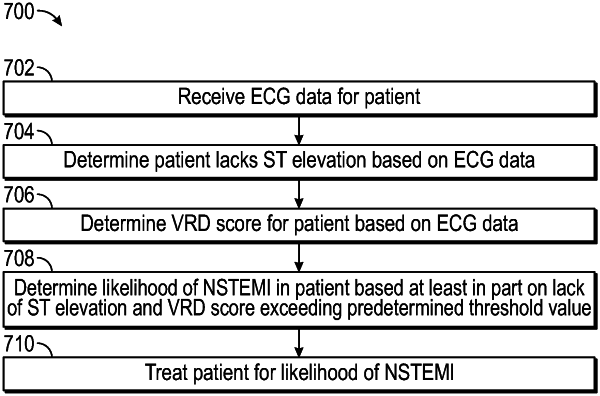| CPC A61B 5/366 (2021.01) [A61B 5/02007 (2013.01); A61B 5/303 (2021.01); A61B 5/316 (2021.01); A61B 5/363 (2021.01); A61B 5/364 (2021.01); A61B 5/6823 (2013.01); A61B 5/282 (2021.01)] | 17 Claims |

|
1. An electrocardiographic (ECG) method comprising:
receiving ECG data related to a person;
determining that the person lacks ST elevation (STE) based on the ECG data;
determining one or more spatial or temporal qualities of ventricular repolarization dispersion (VRD) from the ECG data for the person, the one or more spatial or temporal qualities of VRD including a T wave complexity ratio;
using machine learning to combine the one or more spatial or temporal qualities of VRD to indicate a likelihood of non-ST elevation myocardial infarction (NSTEMI) in the person.
|